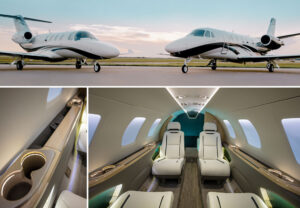Owning a private jet is a symbol of ultimate luxury, convenience, and efficiency. For high-net-worth individuals and corporate executives, private jets provide unparalleled comfort and time-saving benefits. However, purchasing a private jet is a major investment that requires careful consideration of costs, models, maintenance, and operational expenses. In this guide, we will explore everything you need to know about buying a private jet, from selecting the right model to understanding ongoing costs and ownership responsibilities.
1. Understanding the Costs of Private Jet Ownership
Buying a private jet involves more than just the initial purchase price. Several factors contribute to the total cost of ownership, including operational expenses, maintenance, and depreciation.
- Purchase Price: The cost of a private jet varies significantly depending on the size, manufacturer, and features.
- Light jets (e.g., Embraer Phenom 300) cost between $5 million and $10 million.
- Midsize jets (e.g., Bombardier Challenger 350) range from $15 million to $30 million.
- Heavy jets (e.g., Gulfstream G650) can exceed $70 million.
- Operational Costs: These include fuel, crew salaries, insurance, and airport fees. On average, operating a private jet costs between $500,000 and $2 million per year.
- Maintenance Costs: Regular maintenance, engine overhauls, and unexpected repairs add up. Annual maintenance can cost $300,000 to $1 million.
- Depreciation: Like cars, private jets lose value over time. Depreciation rates vary, but a jet can lose 30-50% of its value in the first 10 years.
2. Choosing the Right Private Jet Model
Selecting the right private jet depends on your travel needs, budget, and personal preferences.
- Light Jets (4-8 passengers): Ideal for short trips (1,500-2,500 miles). Examples: Cessna Citation CJ4, Embraer Phenom 300.
- Midsize Jets (7-10 passengers): Best for medium-range flights (3,000-4,000 miles). Examples: Bombardier Challenger 350, Gulfstream G280.
- Heavy Jets (10-18 passengers): Suitable for long-haul flights (6,000+ miles) with luxury interiors. Examples: Gulfstream G650, Bombardier Global 7500.
3. New vs. Pre-Owned Jets: Which One is Better?
- New Jets: Offer the latest technology, warranties, and customization options but are significantly more expensive.
- Pre-Owned Jets: Can be 30-50% cheaper than new jets but may come with higher maintenance costs.
4. Ownership Options: Full vs. Fractional Ownership
- Full Ownership: You own the jet entirely, giving you full control but with high costs.
- Fractional Ownership: You share ownership with others, reducing costs but limiting availability.
5. Must-Know Tips Before Buying a Private Jet
- Hire an Aviation Consultant: An expert can guide you through the buying process.
- Consider Financing Options: Banks and specialized lenders offer private jet loans.
- Evaluate Resale Value: Some models retain value better than others.
Conclusion
Buying a private jet is a major decision that requires careful financial planning and understanding of ownership responsibilities. Whether you’re looking for a light jet for quick getaways or a long-range aircraft for global travel, knowing the costs, models, and maintenance requirements will help you make an informed decision.








